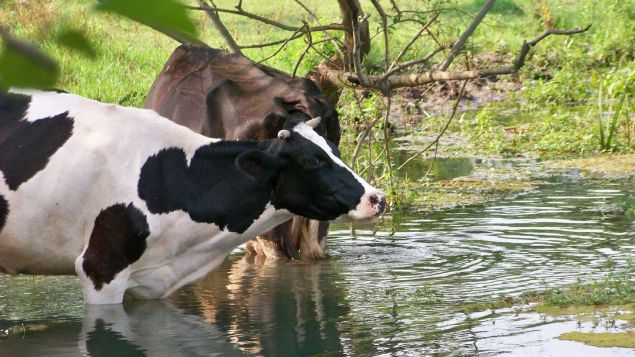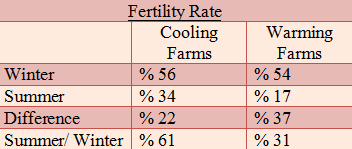

Heat stress can be defined as the reactions of animals against high temperature and moisture. Profitabilities of the businesses are affected negatively under such circumstances and some metabolic diseases arise. The ambient temperature for cattle should be 24-27 °C at most in order to avoid heat stress.
The Problems That May Be Faced With In Hot Weathers;
Water Management And Waterers;
Water Consumption In Different Temperature;

* Cows eat and sleep 2 hours less in hot weathers and accordingly, their milk efficiencies decrease.
The Symptoms Of Summer Acidosis Syndrome (SAS);
Reasons;
The Factors Affecting Feed Selection For Cows:
The KM Content In Ration;
The moisture content of TMR, is effective on how particules will grab on to each other. It is possible animals to make feed selection when the KM content in ration is more than % 65 (moisture is less than % 35). It is stated that they make less feed selection when water is added to the fodder basis ration which include KM more than % 80. It is mostly less than % 60 in the silage basis rations.
Particular size distribution should be controlled from both sides and middle of the feeder. As a result of these controls; if any difference is detected, this will mean that the animals which are fed in different locations, get different rations.
Cooling;
* Cows eat and sleep 2 hours less in hot weathers and accordingly, their milk efficiencies decrease.
The Symptoms Of Summer Acidosis Syndrome (SAS);
Reasons;
The Factors Affecting Feed Selection For Cows:
The KM Content In Ration;
The moisture content of TMR, is effective on how particules will grab on to each other. It is possible animals to make feed selection when the KM content in ration is more than % 65 (moisture is less than % 35). It is stated that they make less feed selection when water is added to the fodder basis ration which include KM more than % 80. It is mostly less than % 60 in the silage basis rations.
Particular size distribution should be controlled from both sides and middle of the feeder. As a result of these controls; if any difference is detected, this will mean that the animals which are fed in different locations, get different rations.
Cooling;

* The cooling application, repairs efficiency loss.

* Fertility rates are affected from the negative effects of hot weathers more than milk efficiency.
Results;
Cooling application is beneficial, but it is not enough to protect the production levels in winter. High efficient and mature animals should be privileged in cooling.
The Precautions Against Heat Stress;
Business Applications:
Ration Applications:
Mineral Material Applications:
İBRAHİM İNCE
ZOOTECHNICIAN
Register to our newsletter in order to be aware of our announcements and news.
